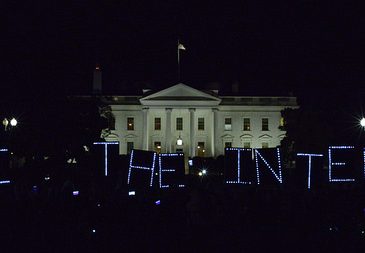Blog
How Google’s Net Neutrality Stance Builds Consumer Goodwill
The results are in from Havas Media’s latest Meaningful Brands Index and purpose-driven brands are outperforming on major counts.
According to Havas, a meaningful brand is one that offers three types of value: marketplace benefits (i.e. value delivered by products); personal benefits; and, collective benefits (i.e. positive impact on greater society).
From the survey, Samsung, Google and Nestle top the list of the world’s most meaningful brands, respectively, with other globally renowned heavy weights investing in the meaning space not too far behind – Danone, Dove, and Nike. According to Maria Garrido, International Marketing Director for Havas, most brands perform well in two of the three ‘meaningful’ categories – marketplace and collective – though fall short in the personal realm by failing to establish direct connections with the consumer. Herein then, lays the big opportunity, and one in which Samsung excels. Explained by Garrido, “[Samsung] does really well on the personal component. They make people’s lives easier, giving them new ideas through a customized experience that people consider to be enriching their lives.”
Unilever backs up Havas’ research in a statement earlier this week which identified its brands that most fully embrace social responsibility outperform the rest. These more socially minded brands, including Dove, Ben & Jerry’s and Lifeybuoy, have had material sales growth at high single-digit or double-digit rate over the past three years. Further, these brands accounted for half of Unilever’s growth last year and also grew at twice the rate of the rest of the business.
From Havas’ two years of research, 300,000 people surveyed in over 34 countries and 1,000 brands across 12 industries, the key takeaways?
Bottom line – brands need to be playing a role in bettering people’s lives, greater society, and overall wellbeing.
But caution ahead, brands’ paths to purpose must be authentic. If not, your customers and stakeholders will see it a mile away – and run. Before throwing resources at this powerful movement, brands must first internally invest and align. Brands must recognize that operating through the lens of meaning or purpose must be peculiar to your specific industry, heritage, stakeholders, current branding, and more.
Once brands have authentically and internally committed to the pursuit of meaning through a long-term lens, or revived their original authentic brand purpose, they can start to build a brand story that will captivate consumers and provide that direct connection all too many brands fail to achieve. In a previous post, we’ve highlighted six topline steps to building a compelling, sharable brand story. Read it here.
Follow We First on Facebook, Twitter & Google+

How Google’s Net Neutrality Stance Builds Consumer Goodwill

Purpose At Work: Lessons From Kane On Launching a Purposeful Footwear Brand
How Brands Create Conversations that Shift Culture and Better Our World

